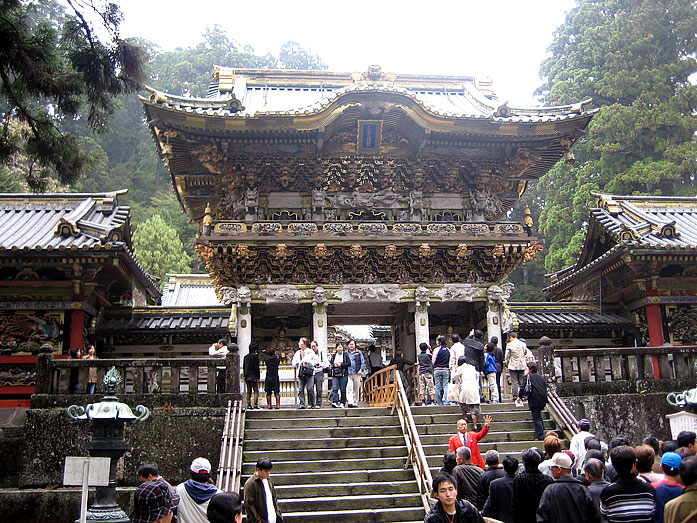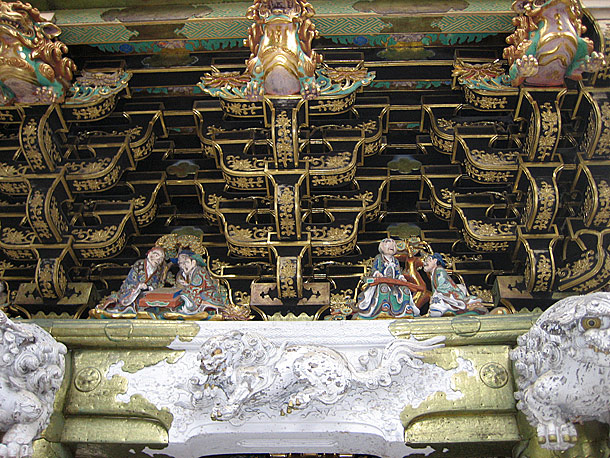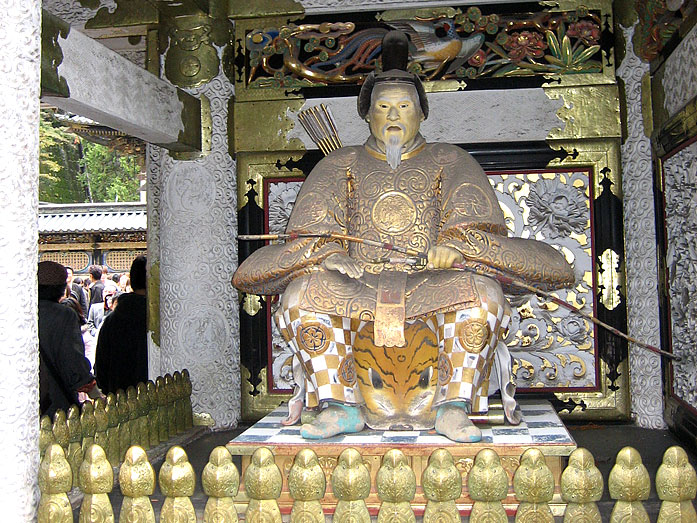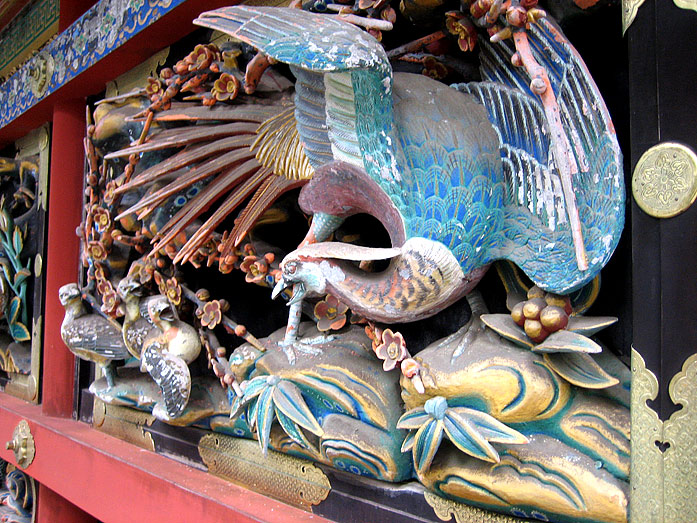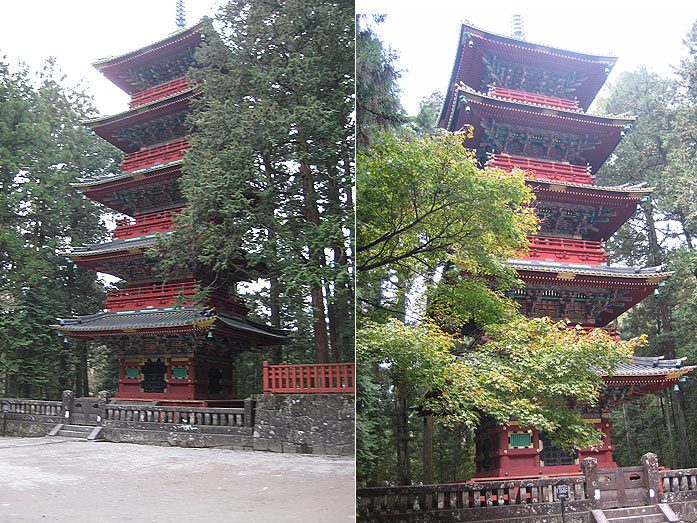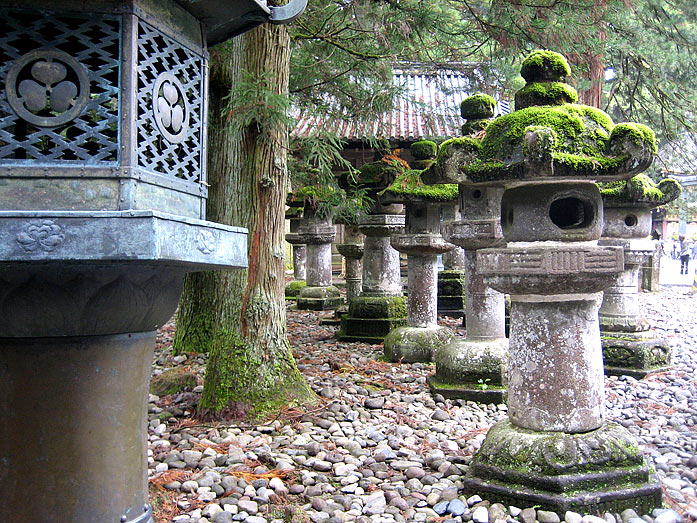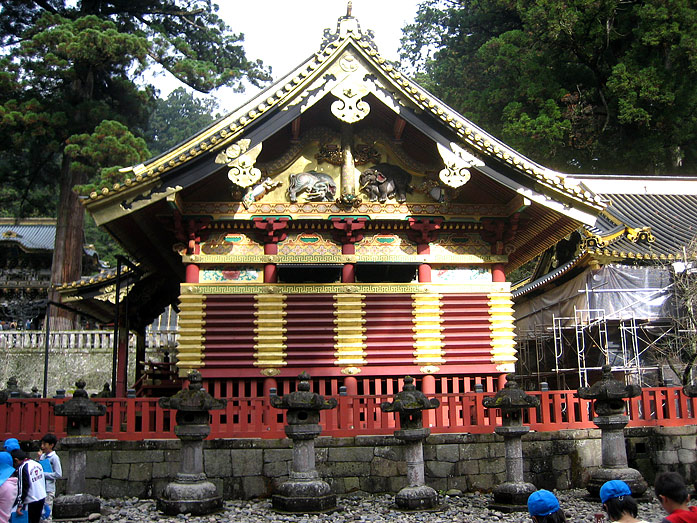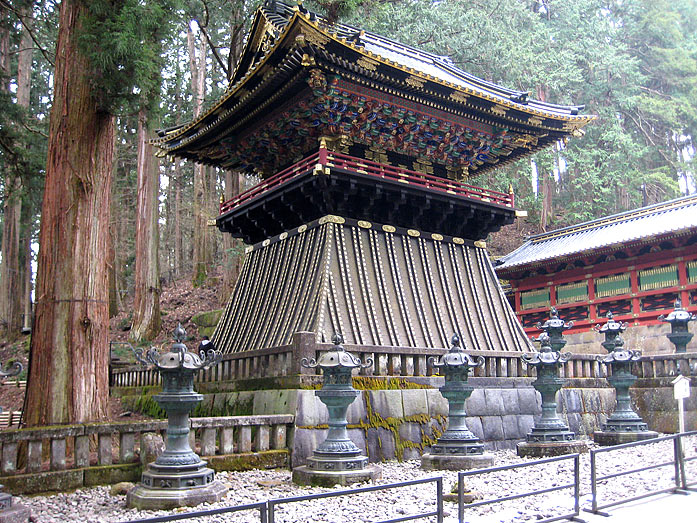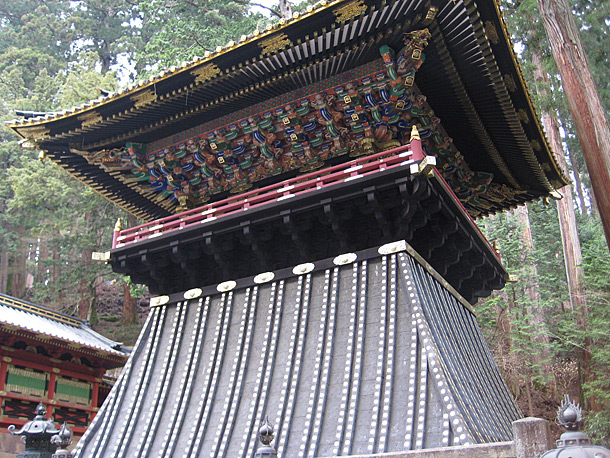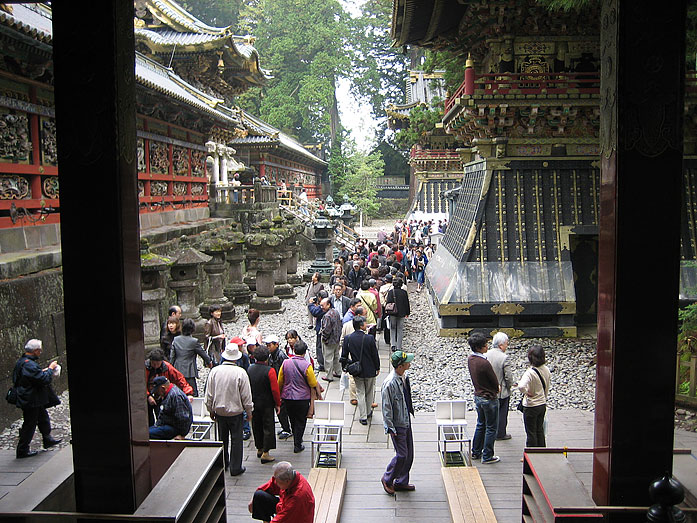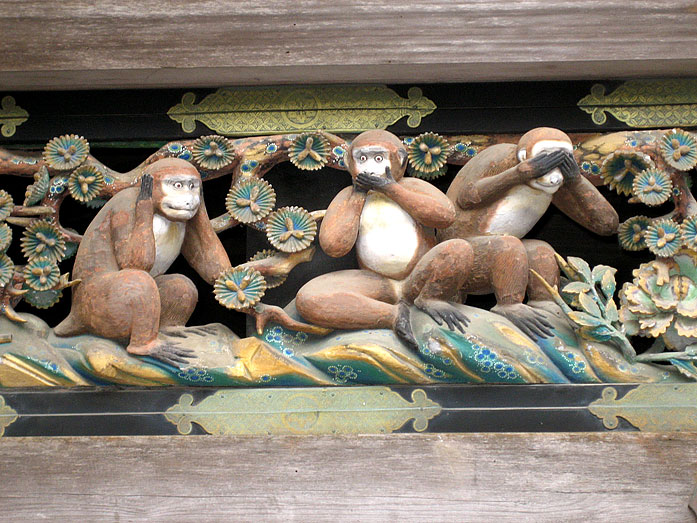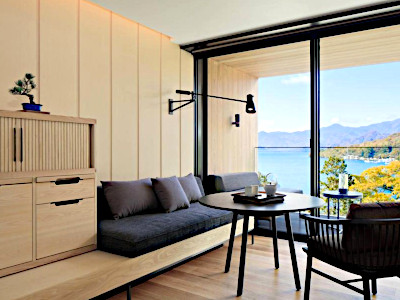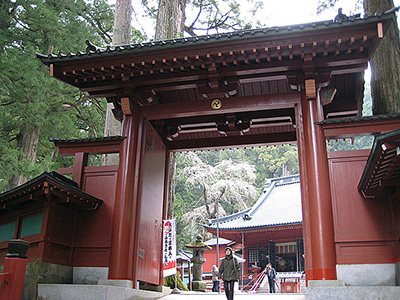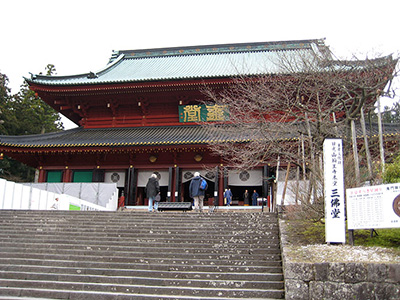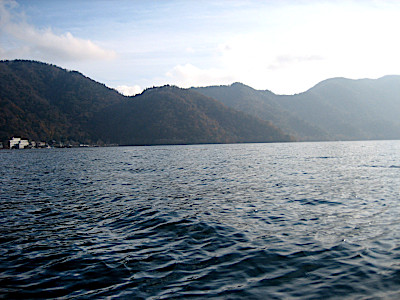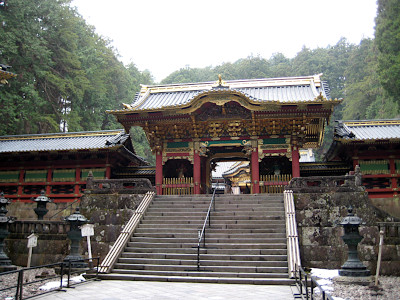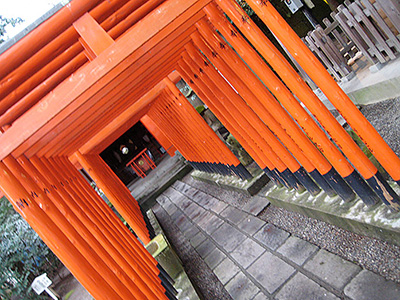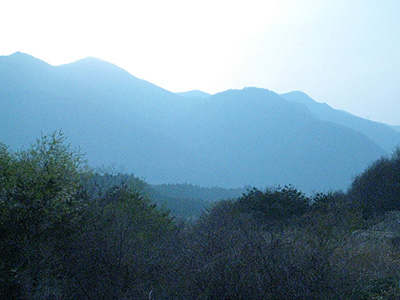Toshogu Shrine in Nikko
This post can contain affiliate links, which means that we may receive a small commission if you make a purchase using these links.
Facts & Figures
The Shinto Shrine Toshogu is located within the Nikko National park and is part of Nikko's UNESCO World Heritage Sites. Toshogu is famous for its decorative and architectural masterpieces that are very closely aligned with the history of the Tokugawa clan.
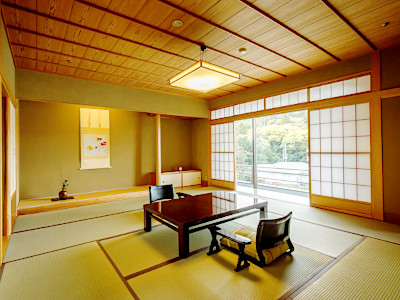 Best Places to Stay in Nikko >
The shrine hosts the mausoleum of Tokugawa Ieyasu (1543 – 1616), who was the founder and first shogun of the Tokugawa Shogunate. The bountifully decorated shrine complex is made up of 55 buildings that are set in a sprawling forest. 8 of those buildings are designated as National Treasures and 34 as Important Cultural Properties by the Japanese government. Yomeimon, one of the most beautiful temple gates in Japan can be found here, the impressive Five-Story Pagoda (Gojunoto) and much much more. Toshogu is one of the top ten must-see places in Japan and therefore can get really crowded.
Best Places to Stay in Nikko >
The shrine hosts the mausoleum of Tokugawa Ieyasu (1543 – 1616), who was the founder and first shogun of the Tokugawa Shogunate. The bountifully decorated shrine complex is made up of 55 buildings that are set in a sprawling forest. 8 of those buildings are designated as National Treasures and 34 as Important Cultural Properties by the Japanese government. Yomeimon, one of the most beautiful temple gates in Japan can be found here, the impressive Five-Story Pagoda (Gojunoto) and much much more. Toshogu is one of the top ten must-see places in Japan and therefore can get really crowded.
- Toshogu Shrine:
- Opening Hours - 08:00 am to 5:00 pm (from April till October, last entry 4:30 pm)
- Opening Hours - 08:00 am to 4:00 pm (from November till March, last entry 3:30 pm)
- Closed - never
- Admission Fee for Toshogu Shrine - 1300 yen (High school students and older), 450 yen (Elementary and junior high school students)
- Admission Fee for Treasure House - 500 yen (Adults), 300 yen (High school students and older), 200 yen (Elementary and junior high school students)
- Admission Fee for Toshogu Museum of Art - 800 yen (Adults), 600 yen (High school students and older), 400 yen (Elementary and junior high school students)
My tips for local activities
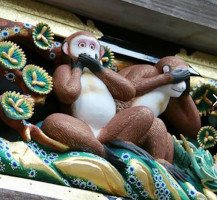
How about exploring the beautiful city of Nikko, its historical places, and the Kegon Falls within a day's trip from Tokyo with a local guide? The personalized tour by our partner GetYourGuide can take up to 10.5 hours. For more details check out this page >
History
Toshogu Shrine was built in 1617 and dedicated to shogun (daimyo) Ieyasu Tokugawa, founder of the Tokugawa Shogunate. The buildings you can see today are dating back to 1636. It took 400000 carpenters just 17 months to construct the whole temple complex. Responsible for this gigantic undertaking was the governor of Tajima Province Akimoto Yasutomo (1580 - 1642) with the help of master carpenter Kora Bungo-no-Kami Munehiro (1574 - 1646). The value of this project was calculated with 40 billion yen by today's standards. In 1999 the shrine complex was registered as a UNESCO World Heritage Site.
Location

Toshogu Shrine is located just next to the Rinno-ji Temple in Nikko within the Tochigi Prefecture.
Address: 2301 Sannai, Nikko-shi, 321-1431 Tochigi
How to get to Toshogu Shrine?
- 10min from JR Nikko Station by bus or
- 45min from JR Nikko Station
Sightseeing spots within Toshogu Shrine complex
Top:
Yomeimon Gate (Yomeimon) - It is without doubt one of the most beautiful and richly decorated temple gates in Japan. It is the symbol of the Toshogu Shrine. Yomeimon has also achieved the status of a National Treasure. It has a height of 11 meters and consists of 508 carvings with some of them covered with gold leaf. This artwork is just amazing. Other name used for the gate is "Higurashi-no-mon" which stands for a gate with mesmerizing beauty.
Kairo (Corridor) - The walls and carvings besides the Yomeimon Gate are called Kairo. This outstanding work in vivid colors is among the best in the country and therefore received the status of a National Treasure.
Five-Story Pagoda (Gojunoto) - The height of the red coloured pagoda is 35 meters. It was a donation in 1650 by feudal lord (daimyo) Sakai Tadakatsu (1587 - 1662). In 1815 a fire destroyed the whole building and it was 3 years later reconstructed by feudal lord Sakai Tadayuki (1770 - 1828). The whole wooden structure can withstand heavy earthquakes.
Main Shrine (Gohonsha) - Part of the temple complex are Haiden (Worship Hall), Honden (Main Hall) and Ishinoma (Stone Chamber). Big celebrations are held here throughout the year.
Karamon Gate - This National Treasure is well known for its beautiful carvings. White powder chalk was used for the exterior of the gate.
Three Sacred Storehouses (Sanjinko) - All of these three buildings (Kamijinko, Nakajinko, Shimojinko) are designated Important Cultural Properties. These buildings are full with costumes used in the Procession of 1000 Samurai. This event is held twice a year. Do not miss the large elephant carvings by artist Kano Tanyu (1602 - 1674) at the Kamijinko Storehouse.
Three Wise Monkeys (Sanzaru) - Who doesn't know the world famous - See No Evil, Speak No Evil, Hear No Evil - three wise monkeys (iwazaru, kikazaru and minazaru) carving by Hidari Jingoro (1596 - 1644). You will find this carving at the Shinkyusha Stable, an Important Cultural Property.
Omotemon or Nio Gate - It is an Important Cultural Property and the front gate of the shrine. Omotemon is protected by two guardian statues (Nio), which protect the temple from demons and evil spirits.
Honjido Hall - The hall is famous for the dragon sculpture (Crying Dragon) on the ceiling of the corridor.
Mausoleum of Tokugawa Ieyasu - After a longer path with steep stairs you will reach the tomb of daimyo Tokugawa Ieyasu (1543 - 1616), a very important historical figure. He was the founder and first shogun of the Tokugawa shogunate of Japan.
Ishidorii (Stone Torii Gate) - Ishidorii was donated by feudal lord (daimyo) Kuroda Nagamasa (1568 - 1623) in 1618. The stone gate is a Important Cultural Property.
Nikko Suginamiki - The Suginami Cedar Avenue, 37 km of roads lined with 13000 cryptomeria trees connecting Nikko city with Toshogu. Daimyo Matsudaira Masatsuna (1576 - 1648) started with donating and planting cedar trees in 1625. It is now the record holder of the longest tree-lined avenue in the world.
Festival & Events in Nikko (dates can change without notice)
April
Yayoi Matsuri (16th - 17th)
The Mikoshi (portable Shinto shrine) procession will be held at the Futarasan Shrine.
May
Shuki Reitaisai Grand Spring Festival (17th - 18th)
The most important annual festival in Nikko includes a horesback archery and a procession of 1000 warriors. The festival is a re-enactment of the funeral procession of Tokugawa Ieyasu (1542-1616) who founded the Tokugawa Shogunate in Edo (Tokyo).
October
Shuki Taisai Grand Autumn Festival (16th - 17th)
It is the repetition of the Shuki Reitaisai Grand Spring Festival in May.

